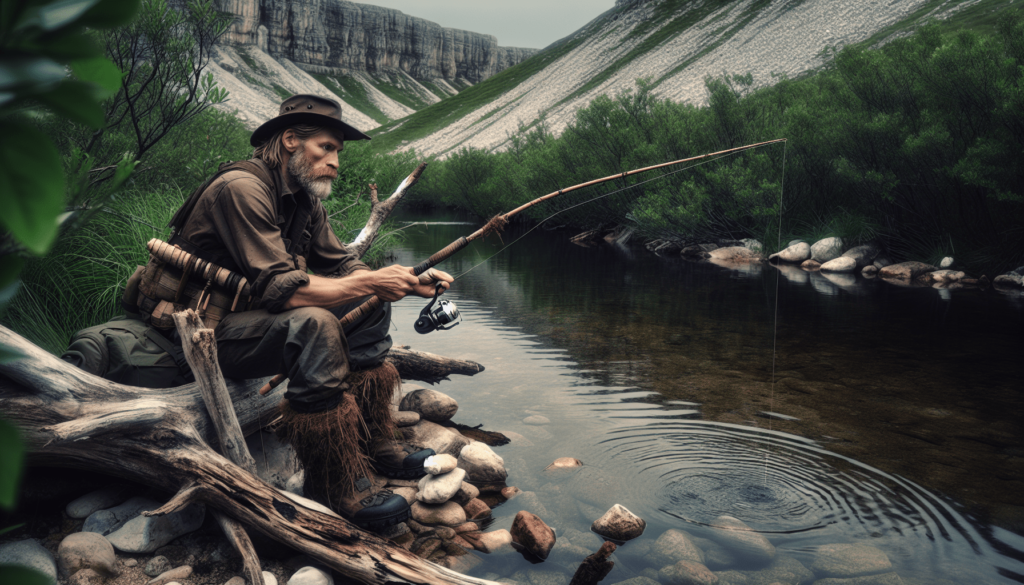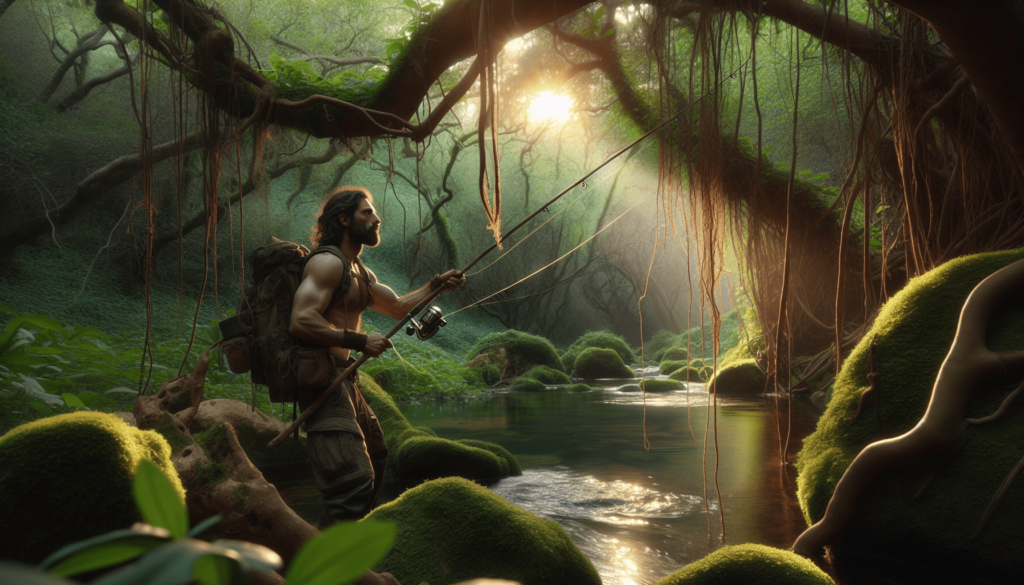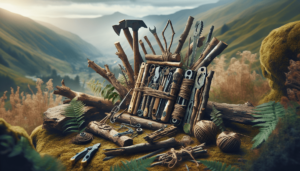Have you ever found yourself pondering what you would do if faced with the need to catch fish in a survival situation? Whether you’re an avid camper, an outdoor enthusiast, or someone who’s curious about survival skills, knowing the best techniques for catching fish can be incredibly beneficial. Let’s embark on an informative journey to ensure you’re well-prepared should the need ever arise.
Understanding the Importance of Fishing in Survival Situations
In survival scenarios, obtaining food swiftly and efficiently becomes critical. Fishing stands out as a valuable skill due to its relative ease and abundant availability of water bodies. Fish are packed with essential nutrients and provide a good caloric value, which can be crucial when you need energy to navigate harsh environments.
Why Fish?
Fish are often more accessible to catch than land animals in wild settings. Unlike hunting, which requires stealth, skill, and equipment, fishing sometimes requires only patience and basic tools which can often be improvised. Considering these advantages, honing your fishing techniques can tip the survival balance significantly in your favor.
Evaluating Your Environment
Before casting a line (or improvising one), it’s essential to assess your environment. Knowing what’s around, both in terms of resources and challenges, will guide your approach.
Types of Water Sources
-
Rivers and Streams: Often turbulent, these bodies of water can be more challenging but house a wide variety of fish species. The flowing water also means a fresher oxygen supply, keeping fish active.
-
Lakes and Ponds: Typically calmer, offering fish in more predictable locations. These water bodies are great for beginners due to the ease of fishing along the banks.
-
Coastal Areas: If you’re near the sea, saltwater fishing is an option, though it requires different considerations due to tides and different species of fish.
Assessing Accessibility
Checking accessibility means observing the terrain around the water. Are the banks slippery or steep? Accessibility will affect where you can set up for fishing and might also indicate specific techniques or equipment you should use. Scan for potential hazards such as wildlife or rapid currents that could compromise safety.

Basic Fishing Techniques
Fishing in survival settings doesn’t demand a professional setup. You can often get by with minimal training and the right techniques. Let’s explore some of the most reliable methods.
Hand Fishing (Noodling)
A technique often associated with catching catfish in waterways, hand fishing involves using your hands to feel for holes in the water where fish might be hiding. This method requires a good understanding of the species you intend to catch and can sometimes require significant courage due to the nature of the depths you might explore.
Pros: No equipment necessary, intuitive.
Cons: Risk of injuries from unseen or sharp objects, limited to certain types of fish.
Spears and Tridents
Improvised or crafted, these tools can be effective, especially in clearer and shallower waters where fish are visible. Sharpened sticks can serve as effective spears if you have no specialized equipment.
Pros: Effective in clear water, allows for a proactive approach.
Cons: Requires skill and patience, limited to shallow water.
Nets and Traps
Nets can be fashioned from a variety of materials and used to corral fish. Traps, on the other hand, can be designed using native materials to lure fish in and prevent their escape.
Pros: Passive technique, effective for small fish.
Cons: Requires materials for construction, not ideal for large fish.
Fishing Lines and Hooks
Using a line and hook is perhaps the most ancient and effective method. Hooks can be improvised, while lines can be made from sturdy vines, strips of cloth, or other suitable materials.
Pros: Tried and tested, versatile for many fish types.
Cons: Requires time and patience, need to source suitable bait.
Improvising Equipment
What if you don’t have professional fishing gear? Good news—it’s possible to create makeshift equipment from natural and personal resources.
Crafting Hooks and Lines
-
Hooks: Bend small, hard twigs, use safety pins if available, or even small pieces of metal can serve. The key is to create a pointed end that can pierce and hold.
-
Lines: Strong vines, strips of cord from clothing, or thin plant fibers work well. Ensure they are adequately long and strong enough to handle a fish’s weight.
Building a Simple Fish Trap
Building a simple fish trap can be achieved by constructing a funnel shape from stones or debris in the water, directing fish into a confined area from which they cannot escape. This method requires patience and observation to determine the best placement and distribution of materials.

Bait: What to Use and How to Find It
Choosing the right bait is as important as the rest of the technique. Fish are selective and each type has varying preferences.
Common Baits
-
Worms and Insects: Dig beneath logs or stones to find these easy baits. Fish naturally feed on these, so they attract effectively.
-
Small Fish: If you catch small fish, they can serve as bait for larger predators, especially in coastal or large lake settings.
-
Plant-based bait: Some fish respond well to plant-based baits. For example, pieces of fruit, marsh berries, or even certain plant leaves might work.
Finding Bait in the Wild
Be observant! Turn over rocks for insects, break open rotting logs for termites, or catch small frogs and use them as bait. Always test for effectiveness and adjust based on fish response.
Understanding Fish Behavior
Knowing how fish behave helps in deciding the best fishing techniques and times to maximize your success rate.
Best Times to Fish
Fish are typically more active during dawn and dusk. These times of low light offer cover from predators in the air, making fish more daring about coming close to the shore.
Recognizing Fish Patterns
Pay attention to ripples, disturbances, or movements in the water. Fish often travel in schools, and spotting one can indicate more are nearby. Spend time observing before setting up your fishing strategy.
Safety Considerations
While catching fish is crucial, your safety should never be compromised. Here are some key considerations:
Watch for Wildlife
Be mindful of other predators nearby, as fishing areas might also attract bears, alligators, or other dangerous animals. Always carry deterrents or keep noise to alert these creatures of your presence.
Avoid Overexertion
Fishing can be labor-intensive. Balance your energy outlay; dehydration and exhaustion can be significant risks in a survival context. Stay hydrated and take breaks as needed.
Dealing with Injuries
Small cuts or injuries are common. Ensure you have a basic understanding of first aid, especially regarding water-borne pathogens. Clean wounds immediately and use any available antiseptics.
Ethical Considerations
Even in survival situations, ethical treatment of the environment and wildlife is important.
Sustainable Fishing
Only catch what you need, preserving the ecological balance of the area. This practice ensures that these natural resources remain readily available for future needs—both yours and the local ecosystem’s.
Leave No Trace
This philosophy extends to minimizing your impact. Avoid littering, and if you create traps or lines, dismantle them when you’re finished. A clean environment supports the health of future fish populations.
Conclusion: The Balanced Approach
Successfully catching fish in a survival situation requires a blend of knowledge, skill, and respect for nature. You’ve embarked on a journey to understand the principles of survival fishing; combining these techniques with practice and ethical awareness will ensure you possess a capable and sustainable means to support yourself outdoors. While the idea of surviving on your resourcefulness is empowering, always remember the importance of planning and safety to enjoy the wonders of nature responsibly.




